
- Home
- Photography Tours
- Diary / Blog
- Galleries
- Foreign Trips
- Tasmania 2016
- NE Queensland 2016
- Western Alps 2016
- NE Spain 2016
- Australia's Wet Tropics 2015
- Australia's Top End 2015
- SW Australia 2015
- Switzerland 2015
- Andalucia 2015
- Belize 2015
- Australia 2014
- Switzerland 2014
- Belize 2014
- Bahama Islands 2014
- Switzerland 2013
- Ecuador 2012-2013
- Florida 2011-2012
- Vancouver Island 2011
- Australia 2010
- Peru 2008
- Bulgaria 2007
- Lesvos 2006
- California 2006
- New Zealand 2005
- Extremadura 2005
- Goa, India 2004
- The Gambia 2003
- About
October 2015
The "Top End" of Australia
Part 8: The finches of Wyndham
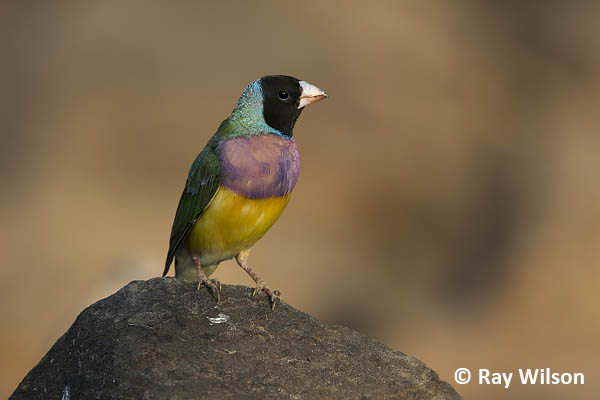
"Black-faced" Gouldian Finch (Erythrura gouldiae)
I hadn't intended making the trek all the way over to Wyndham (another 425km west of Victoria River crossing) when I originally planned this trip, but after only getting flight views of a small flock Gouldian Finches near Katherine, I changed my plans. Obviously getting photos of one of Australia's most beautiful birds is something worth making an effort for!
It turned out that finding the Gouldians at Wyndham was not as easy as the guidebooks make it out to be. The information I had stated that the caravan park was the best place to see them. Not when I was there it wasn't! When I got to the caravan park, I was advised my best chance would be outside the council offices in Wyndham as they regularly come down to bathe in the puddles generated by the sprinkler system...Again, that was out-dated information. I arrived at the council offices at first light to find there were no active sprinklers...Three hours later, an employee arriving for work at the council offices told me they had had to change their sprinkler regime recently due to local vandals destroying the automatic sprinklers and so the sprinklers were no longer coming on at 5.30am and the Gouldians had not been seen for a while because of it...
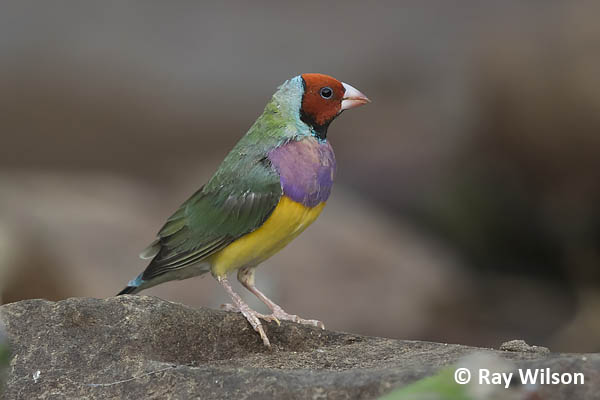
"Red-faced" Gouldian Finch (Erythrura gouldiae)
I had pretty much given up hope by this time so decided to do some exploring. About 30km south of Wyndham I came across a signpost for "The Grotto" so decided to check it out. It turned out it was a gorge with near vertical walls and what is probably a quite pretty waterfall in the wet season, but was totally dry in October. What did catch my attention, however, was that there appeared to be permanent water down in the valley bottom. It looked promising, but how on Earth was I going to get down there...?
After a bit of scouting around, there was no obvious path down to the valley floor, so I retraced my steps to the main highway, parked at the bridge and walked up the dry riverbed towards the gorge. I didn't have to walk all that far, probably about 1km, before I came to the first pool of water where a large flock of approximately 400 finches were bathing and drinking. The majority of the flock were Long-tailed and Masked Finches but there were also about 100 Gouldian Finches among them! Since it was getting towards midday, the light was unfortunately far too harsh for getting good photos so I vowed to return at dawn the following morning in the hope that the flock would put in a repeat performance.
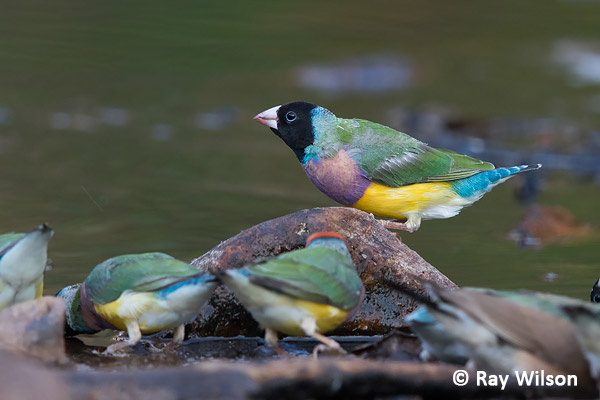
"Black-faced" Gouldian Finch (Erythrura gouldiae)
I spent the next 3 mornings sitting by the pool. The first morning, I picked the wrong spot for my stake-out and discovered the finches preferred a shallower pool about 20m away from where I was sitting and all I got were a few shots of Red-backed Fairywren and Crimson and Double-barred finches.
The next two mornings I got it right and from where I was sitting I had a perfect view of the finches coming to drink only 10-15m in front of me. They were at first understandably a little bit nervous of my presence so I had to keep as still as possible, but after only about 5-10 minutes they quickly got used to me and settled down to drink and thereafter totally ignored me.
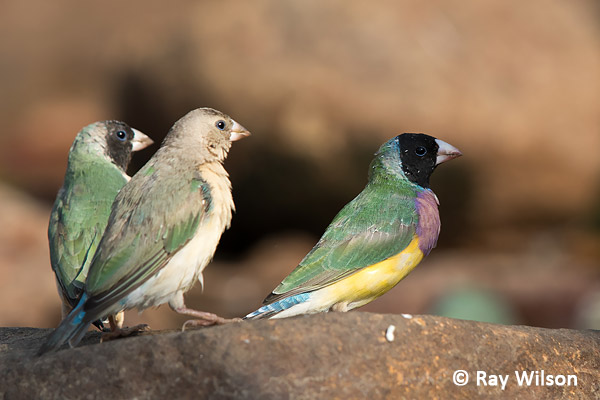
immature & adult "Black-faced" Gouldian Finch (Erythrura gouldiae)
Adult Gouldian Finch occur as three different colour morphs. "Black-faced" is the most common of these, followed by "Red-faced" and finally by the rare "Yellow-faced" which I didn't see any of.
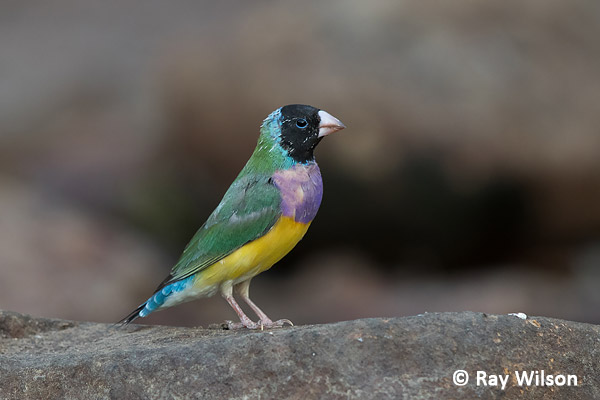
"Black-faced" Gouldian Finch (Erythrura gouldiae)
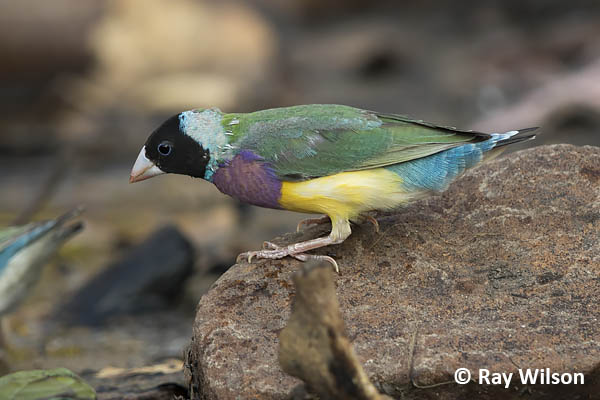
"Black-faced" Gouldian Finch (Erythrura gouldiae)
About 80-90% of the Gouldian Finches present were immatures.
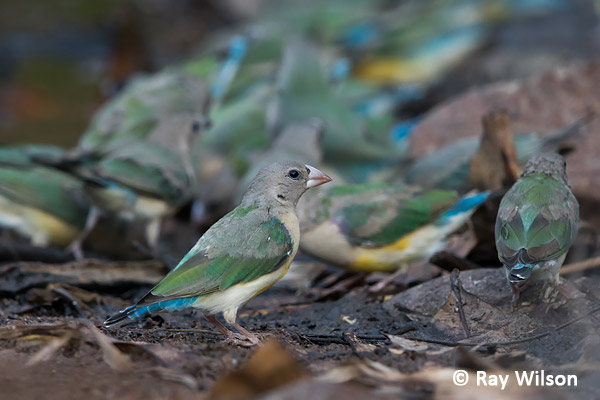
immature Gouldian Finch (Erythrura gouldiae)
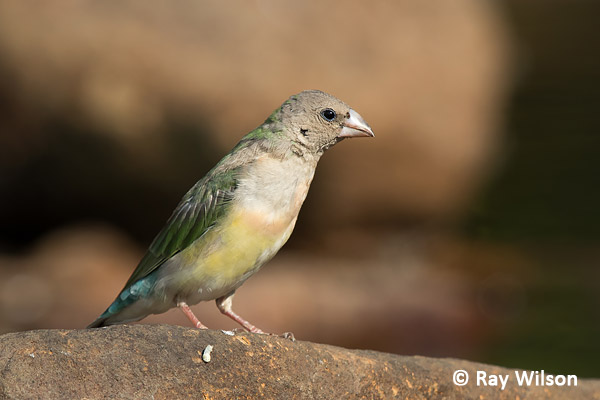
immature Gouldian Finch (Erythrura gouldiae)
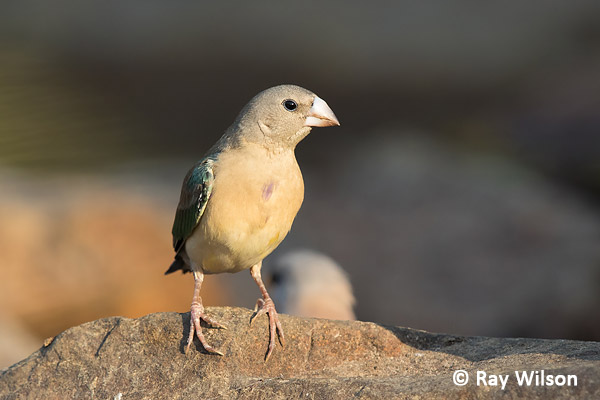
immature Gouldian Finch (Erythrura gouldiae)
The commonest finch visiting the pools were Long-tailed Finch, a very beautiful bird in its own right.

Long-tailed Finch (Poephila acuticauda)
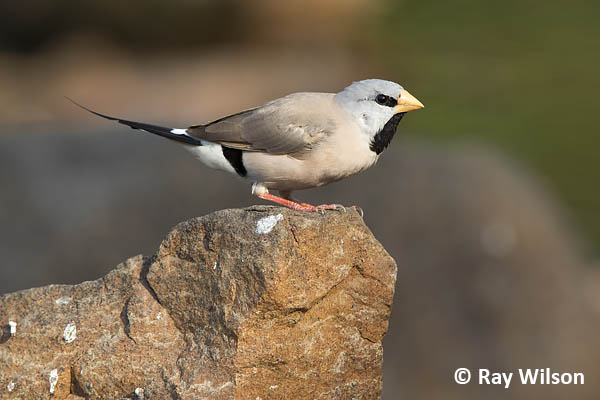
Long-tailed Finch (Poephila acuticauda)
Masked Finches were also quite common.
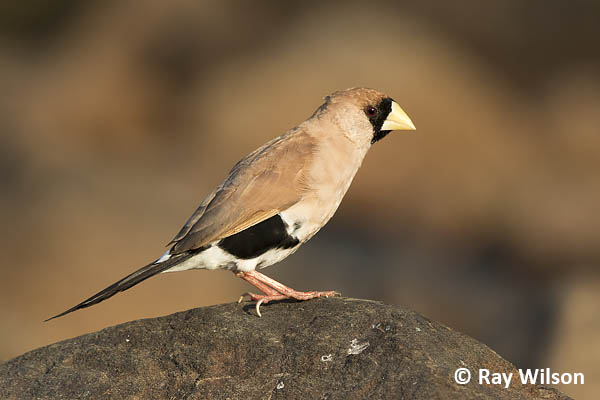
Masked Finch (Poephila personata)
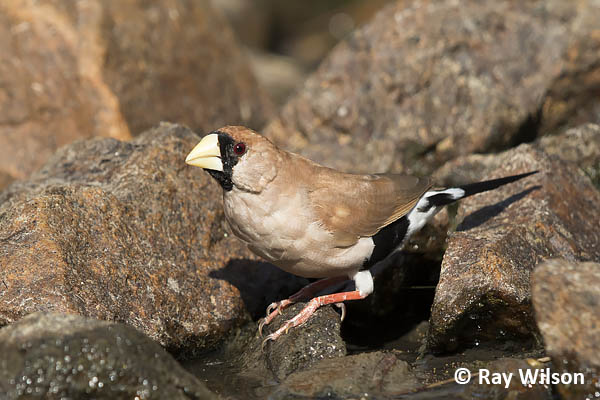
Masked Finch (Poephila personata)
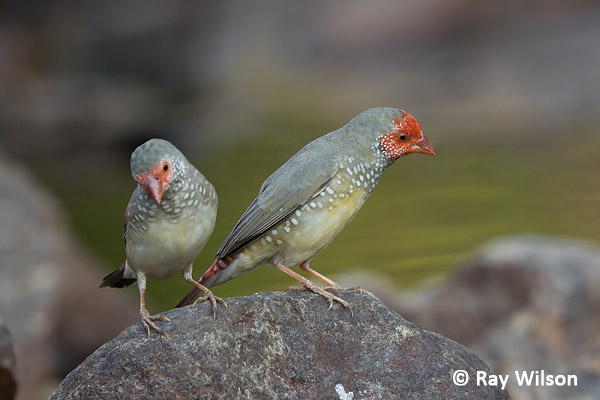
Star Finches (Neochmia ruficauda)
Only about a dozen Star Finches were seen. These did not generally associate with the main flock and came down to drink and bathe either independently, or in the presence of Crimson Finches, usually during quiet periods when the pool wasn't so busy with Long-tailed, Masked and Gouldian Finches.
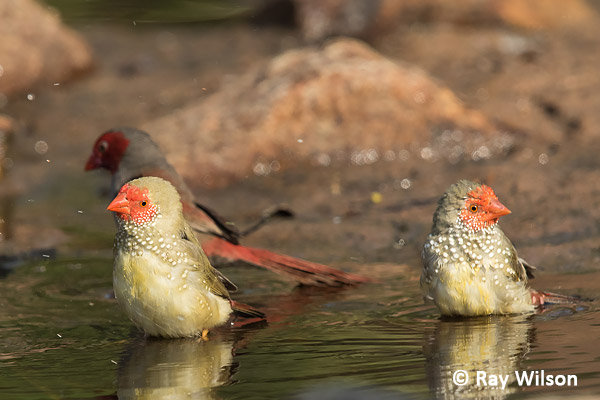
Star Finches (Neochmia ruficauda)
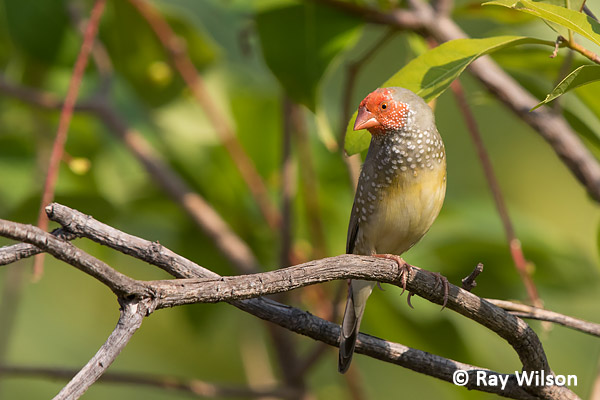
Star Finch (Neochmia ruficauda)
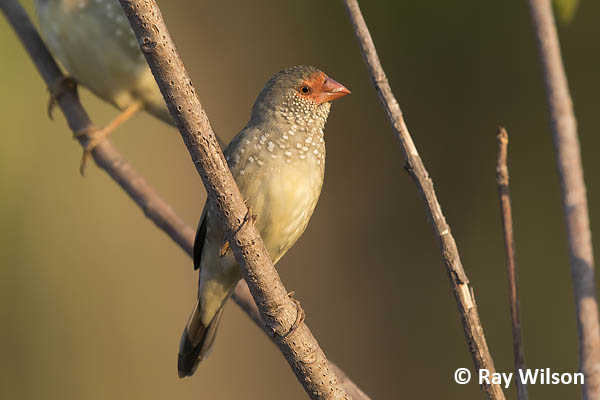
Star Finch (Neochmia ruficauda)
Being a species that prefers moist habitats, the Crimson Finches were not just visiting the ponds for a drink, but were also nesting in the emergent vegetation further upstream.
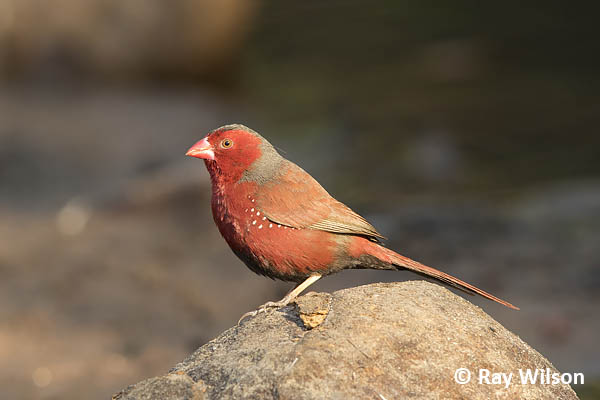
Crimson Finch (Neochmia phaeton)
Double-barred Finch is a common and widespread species throughout most of northern and eastern Australia and good numbers were visiting the pools for a drink.
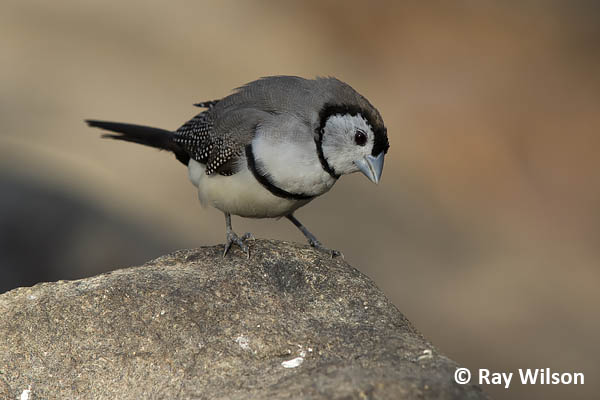
Double-barred Finch (Taeniopygia bichenovii)
Finally, a single Chestnut-breasted Mannikin put in an appearance on the last morning, taking the final tally up to a total of 7 different species of finch visiting the ponds!
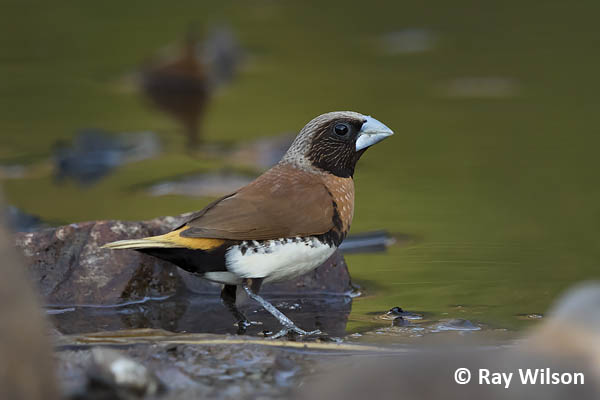
Chestnut-breasted Mannikin (Lonchura castaneothorax)
Ray Wilson owns the copyright of all images on this site.
They may not be used or copied in any form without prior written permission.
raywilsonphotography@googlemail.com